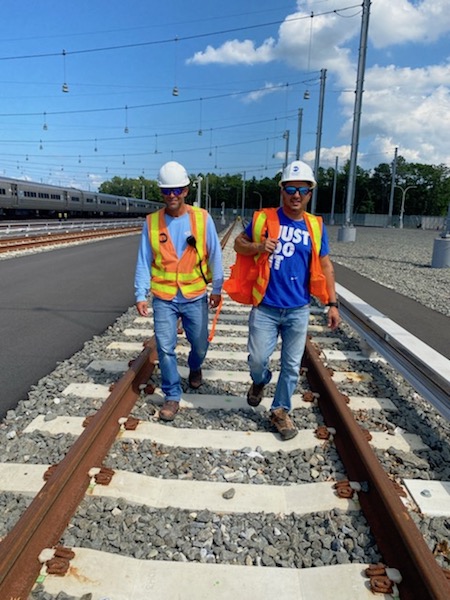New York, NY – In December, SMART Local 29 Track Foreman Keith Heller will mark his 25th year in the field.

“I was submitting applications, applying for positions [when I got the call],” Heller recalls.
He was initially hired as a coach cleaner in 1997, then moved to the Track Department two years later. A 60-day apprentice program was required while working.
“During the program you’re not allowed to work around live third rail,” Heller says. “They teach you how to wrap the third rail with protection mats.”
As well as the initial program, Heller explains, “Every worker goes through annual training that’s mandated by the FRA [Federal Railway Administration]. Foremen, every three years, have to re-qualify on the book of rules with the rules examiner to move equipment on live tracks.”
Heller says he was lucky to have made the move from track worker to track foreman as quickly as he did — in about six years. He cites a big turnover in the 1990’s as the reason for this relatively fast rise. He job title demands multiple duties, which also carries the requirement for one-and-a-half to two years of additional schooling.
Currently, Heller has “the same qualifications as engineers that drive the trains. I can move track cars, in case we have to change the rail out. You move equipment just like you have to move a train.”
With the aid of another worker watching out for him, sometimes on multiple tracks, Heller walks about seven to eight miles a day on the track looking for broken rails, joint bars that are not welded together and might be missing bolts, and switches that could be cracked and have a problem with insulation — among other potential problems.
There are also heat patrols that go out and attend to the steel when rail temperatures reach 125 to 130 degrees.
“The track could just buckle and [we] could have a major derailment,” Heller says.
Heller was lucky during Covid, in that his position requires he work with just one other person — the track patroller — who keeps an eye out for oncoming trains as Heller walks the track.
“That was by choice,” he says. “I was going home to my two children and wife at the end of the day [and didn’t want to risk being infected]. It was quite hairy at the time.”
Heller remained healthy, except for an unrelated illness that kept him out for two weeks.
“My union is always looking out for the manpower and interests — they have one-hundred-percent always helped employees on the LIRR,” he says.



